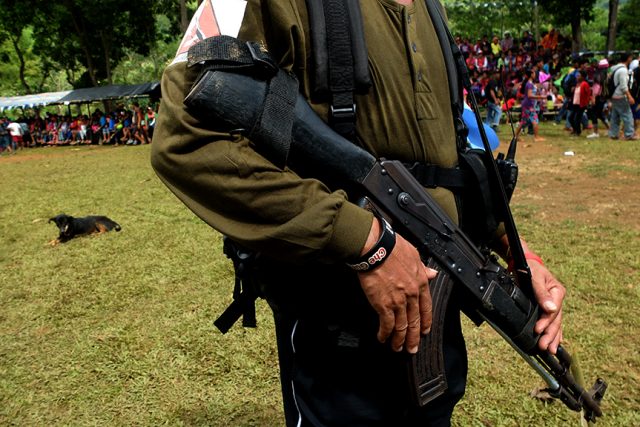Wood armor on armored vehicles won't save them from ISIS rockets.

New pictures from the fighting between Philippine government forces and guerrillas aligned with the Islamic State show armored vehicles with ad hoc wood armor. The images of the Philippine Army Cadillac Gage V-150 armored car, circulated on Twitter, show it covered with discarded ammunition crates and salvaged wood. The wooden armor is supposed to protect it from man-portable anti-tank weapons— another image showed a RPG-2 rocket-propelled anti-tank grenade launcher captured from ISIS troops.
The armor is well-meaning, but probably not up to the job. So could wood armor actually work?

Arms cache found in Marawi City, Philippines. RPG-2 anti-tank grenade launcher on right.
Via Twitter.
RPGs and other infantry anti-tank weapons use so-called high explosive anti-tank (HEAT) technology, also known as shaped charges. The shaped charge was first demonstrated by Charles Munroe, a professor at the U.S. Naval Academy, in 1888. A cone-shaped cavity is placed against a slab of metal, or tank armor, and an explosive charge is detonated behind it. The cavity channels the force of the explosion through the cone to the tip. This enables a shaped charge warhead to penetrate armor up to seven times the diameter of the charge.
The result is that a handheld rocket launcher such as the RPG-2 can penetrate more than 180 millimeters of steel armor. This is more than enough to pierce the armor of a V-150 armored car, which is designed to stop bullets with a diameter of 7.62-millimeters or smaller.

To be effective, wooden armor would have to do one of two things: stand away from the vehicle's hull, or be plenty thick. In the first case, building a "cage" of wood armor would do the trick. This would cause the RPG warhead to detonate against the wood and burn through the "armor," but dissipate before it actually reached the vehicle's surface. Think of the cage armor that protects U.S. Army Stryker interim armored vehicles. It actually doesn't matter what the cage is made of as long as the material is hard enough to trigger the contact fuze.
If a cage isn't available, then a lot of wood would help. At least a foot of wood armor might do the trick to dissipate the armor-piercing molten jet. Maybe. The distance between the slat armor on the Stryker and the actual surface of the vehicle might be a good hint at how thick wood armor ought to be.

DoD photo.
Of course, wooden armor would be absolutely useless against kinetic energy anti-tank rounds. Modern armor-piercing ammo, which is basically a giant tungsten or depleted uranium dart fired at supersonic speeds, would cut through wood like a hot knife through butter. Fortunately those types of anti-tank weapons are mounted only on full-size tanks, of which ISIS in the Philippines has none.
http://www.popularmechanics.com/military/weapons/a26804/wooden-armor-tank-rockets/



